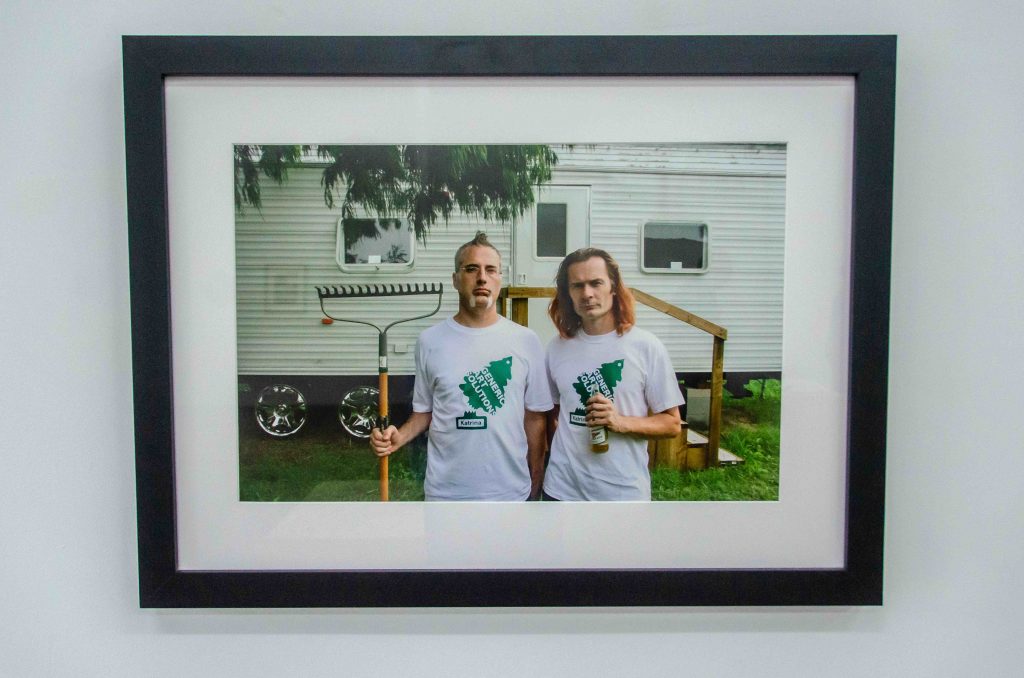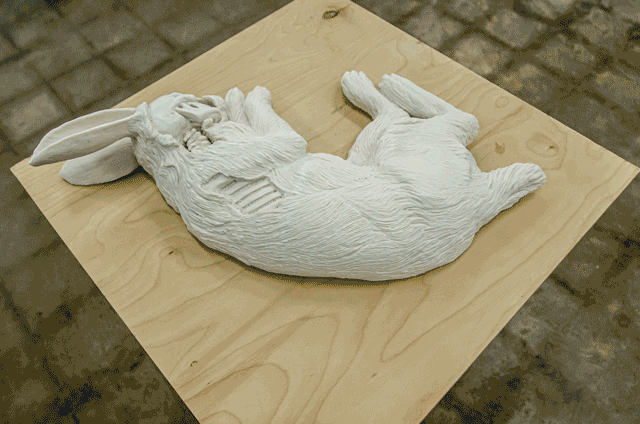“Subversive Suburbia”, At Mindy Solomon Gallery, June, 2019
Subversive Suburbia
“You’ll be surprised to see what can collect in a mattress over the months, over the years. Every day, every night of our lives, we’re leaving little bits of ourselves, flakes of this and that, behind. Where do they go, these bits and pieces of ourselves? Right through the sheets and into the mattress, that’s where! Pillows, too. It’s all the same. He”
― Raymond Carver, Will You Please Be Quiet, Please?
It all looks good until you open the basement door.
― Anonymous neighbor
Lush plants, manicured lawns, and perfect families. The American dream. Except when it’s not. Dysfunctional families, crazy house pets, and lurking beings- animal, vegetable, and mineral. All of the unseen and unknown. This is the story of Subversive Suburbia. Told through the creative lens of 4 artists and artists’ collaboratives, each artist has a unique and topical story to tell.
Kate MacDowell has spent her career studying and interpreting the animal world and the intersection between man and nature. She explains:

We may also choose to look toward our own destiny as we track early casualties of our transformation of the environment–from the spread of invasive species such as pine-bark beetles to historical extinction events such as the destruction of the passenger pigeon. In each case our desire or longing for a psychological union between man and nature is complicated by friction and the discomforting feeling that we too are vulnerable to being victimized by our destructive practices.”
MacDowell’s sculptures are intricately articulated narratives. The subject of her work is the impact industrialization and gentrification has on the natural world. Whether it is the development of suburban housing communities, or scientific experimentation, animals and plants suffer the consequences. Forced to adapt to diminished food supplies and increasingly populated areas, animals become ever more cunning in their efforts to survive and thrive.
Scot Sothern is an urban explorer. Sothern states: “I grew up in Springfield, Missouri, in the 1950s and ’60s. I left shortly after high school and headed for Southern California looking for sex, drugs and rock ‘n’ roll. I’ve moved around a bit since then, but Los Angeles is home and where I have spent most of my life. My father had a portrait and wedding photography studio so I was in the darkroom and behind a camera at an early age. Photography for me, at that time, was merely bread and butter and had little to do with art. I was groomed to take over the family business and, while that never happened; photography just felt like the only thing I knew how to do. Like a modern day Edward Curtis, Sothern documents his subject matter for posterity. Highlighting the plight of those simply trying to get by.

Generic Art Solutions (GAS) is the collaborative efforts of Matt Vis and Tony Campbell. This New Orleans-based art duo utilizes nearly every art medium as they examine the recurring themes of human drama and the challenges of navigating the social and political issues at play within contemporary society. Using history as a springboard for reinvention, the artists’ re-contextualize existing imagery, often well known and recognizable. Pointing out the absurd and dysfunctional- GAS shows us how very alike we really are.
Jeremy Chandler is a photographer and an outdoorsman. In his newest project he explores themes common to his work- community, nature and masculinity. He writes of his newest project, Invasive Species: The Florida landscape comes alive in this experimental documentary film created by Shawn Cheatham and myself. Striking cinematography and a haunting original score guide the viewer through a contemplative glimpse into the state’s ongoing struggle with the Burmese Python. Told from the perspective of “the local”, Invasive Species explores how pythons were artificially thrust onto this fragile ecosystem and continue to challenge the ethical, social, and psychological paradigms of a people learning to live side-by-side with a new predator. The landscape is presented as a dangerous, wild space that can harbor and effectively conceal an entire breeding population of apex predators, as the python invasion becomes a vehicle to poetically meditate on metaphysical concepts of place, masculinity, and the indigenous.
web site Mindy Solomon Gallery
